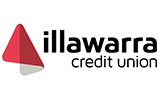What is home loan pre-approval?
Home loan pre-approval means you pre-qualify to borrow a certain amount of money from a lender based on information you provide about yourself and your financial situation. It’s sometimes called ‘conditional’ approval because it’s subject to conditions before the lender will give full loan approval.
Pre-approval is an initial thumbs up that you have provided sufficient documentation to meet the lender’s approval criteria. It gives you an idea of how much you can borrow to buy a property and what you can offer to potential sellers.
It's important to stick to your pre-approved amount when making offers. If you’re pre-approved to borrow a maximum of $600,000, your application may ultimately be declined if the property you find would require a larger loan.
When you finally make an offer on a home that ticks all the boxes and it’s accepted, the lender will decide whether to give you full approval (also known as unconditional approval).
When you get home loan pre-approval, the lender will inform you of:
- The maximum loan amount you qualify for, your home loan interest rate and loan term
- The timeframe the pre-approval is valid for — usually 90 days (three months)
- The conditions that must be met for your home loan to be approved in full — usually this includes a credit check, property valuation, and providing a contract of sale to the lender
How does home loan pre-approval work?
Your income and financial position
This involves reviewing your income, monthly expenses and existing debts to determine your ability to repay the loan.
Your deposit or equity
The deposit amount, or how much equity you have if you already own a property, impacts your borrowing capacity and whether you’ll need to pay lender’s mortgage insurance (LMI).
Your loan-to-value ratio (LVR)
Your likely loan-to-value ratio based on the price range of properties you’re interested in.
Whether you have a guarantor
If applicable, having a guarantor may reduce the lender’s risk and increase your chances of approval.
Keep in mind that pre-approval is not a guarantee of credit, and you, as the borrower, are also under no obligation to take the loan. However, pre-approval does show you're a serious buyer and that you're confident you can afford a property.
Types of mortgage pre-approval
System-generated pre-approval
This is an automated assessment of your borrowing capacity and creditworthiness. It’s a quick online process that can be completed in just a few minutes. This type of pre-approval relies solely on the information you provide, without any supporting documents to back it up. This leaves room for errors and is therefore less reliable than a full assessment.
Full assessment pre-approval
This is when a lending specialist assesses your individual circumstances and finances. They will verify your financial documents and conduct a full credit check via a credit bureau (e.g. Equifax, illion and Experian). A full assessment may take a few days to complete but will give a better indication of your likelihood of receiving unconditional approval from the lender.
When should you apply for pre-approval?

Mansour Soltani, Money's home loan expert
“The best time to get pre-approval is when you’re ready to seriously pursue properties and put in offers. If a real estate agent asks if you have pre-approval and you tell them no, you may as well as tell them you’re not a serious buyer. This can kill your negotiations before they even start.”
Mansour Soltani, Money's home loan expert
When you apply for pre-approval, the lender may conduct a ‘soft’ credit check to verify your credit history. A soft credit check typically does not impact your credit score. Remember, a lender needs your permission before conducting a ‘hard’ credit check, which does impact your credit score.

Buyer with pre-approval case study
Jason Elwood is a home buyer who obtained pre-approval before inspecting properties
He was in the market for eight months and inspected 12 properties before finding the right one. Jason was rejected on six offers initially until he sealed the deal with a pre-approval on a $745,000 home.

First-home buyer without pre-approval case study
Dave Langford is a first-home buyer who opted to forgo pre-approval
He was looking for a property for a few weeks and inspected six properties before finding the right one. Dave was rejected on three offers until he sealed the deal on a $540,000 home with no pre-approval.
How to get pre-approval for a home loan
The home loan pre-approval process has fewer steps than a full application. Here’s how it works:
Fill out the lender’s home loan application form
You can do this online on the lender’s website or you can book an appointment with a home lending specialist if you prefer to speak to a person or have questions about the process. You’ll be asked some basic questions to check your eligibility for a home loan before proceeding. The lender may refer you to a home loan specialist if you're self-employed, retired, applying with a guarantor, seeking a split loan, or are not an existing customer.
Submit your supporting documents
If you’re getting a full-assessment pre-approval, your lender will give you a list of paperwork you need to submit. This will usually include some recent payslips, bank statements, details of financial obligations, like credit cards or other loans. Have your documents ready to speed up the process.
The lender will assess your borrowing capacity
The lender will estimate how much you could repay on a home loan based on information you provide about your income, living expenses and outstanding debts. Some lenders will conduct a ‘soft’ credit check (which doesn't impact your credit score) before giving you conditional approval. Others may simply use a serviceability calculator.
A ‘hard’ credit check (recorded on your credit report) is usually only conducted when you apply for unconditional approval. That’s when the lender will check for any outstanding debts, missed payments or defaults on your credit file. Keep your credit rating in good standing by staying on top of your debt payments.
If you’re pre-approved, you'll receive a confirmation letter
Your pre-approval letter will specify the maximum loan amount you qualify for and your interest rate. With pre-approval in the bag, you can shop around for your dream home with a budget in mind.
Once your offer on a property is accepted, the lender will decide on unconditional loan approval
Once you've found a property you want to buy and your offer has been accepted, your application can proceed to the next stage — unconditional approval (or full approval).
The lender generally will ask for your contract of sale or acceptance of offer, confirmation your financial situation hasn’t changed, a property valuation report, and fulfilment of any additional conditional requirements, such as obtaining home insurance.
After that, your lender will issue a formal loan offer detailing the terms and conditions of the loan, including your interest rate.
Loan pre-approval documents you’ll need
Your lender may ask you to submit some supporting paperwork to verify your personal and financial information. This is an important step in the pre–approval process to get an accurate assessment of your borrowing capacity. Here’s a list of documents you may be asked to provide:
Identification documents
You’ll need to verify your identity with the lender before you can apply for any home loan product. If you’re already a customer, the lender may skip this step.
When you apply for pre-approval, you will be required to satisfy the 100 points of ID system. You’ll be asked to provide at least one primary document (e.g. passport, driver’s licence, citizenship certificate) and secondary documents like a Medicare card, bank statements and utility bills.
Proof of income
Your lender will need proof of income to assess your borrowing power, including:
- Two payslips for the year to date (usually in a PDF format)
- A contract of employment which states your annual salary
If you’re self-employed:
- A tax return for the year to date (some lenders may require two latest returns)
- Up to two years of financial statements, including profit and loss (P&L) statements
If you rely on other income types for your application (like rental income from another property you own or dividend income if you own shares), you’ll need to provide evidence of this too.
Bank statements
Your lender may ask for three months of bank statements to validate your income, check your living expenses and that your deposit has been accrued over time if you’re a first-home buyer. Lenders want to see a genuine history of savings and responsible spending.
You need to be able to explain any inconsistencies in your earnings and expenditures to your lender. Whether it’s a recent holiday you’ve taken (like a honeymoon in the case of many first-home buyers) or a car purchase, it’s important to indicate this to a lender so it can accurately assess your regular spending habits.
Proof of your assets and liabilities
Your lender will also ask for a summary of what you owe (your debts) and what you own (your assets) and take this into account when considering your application:
Debts could include:
- Credit card limits
- An existing home loan
- Buy now, pay later (BNPL) accounts
- Student debt
Assets could include:
- Money in a savings account or term deposit
- Investments (e.g. shares or bonds)
- A car or other vehicles
- Other properties
How long does it take to get pre-approval for a home loan?
Getting pre-approval generally only takes a few days depending on the lender and the complexity of your home loan application. Having all your information and financial documents ready can help speed up the process. You can always ask the lender how long the process generally takes to ensure you aren’t left waiting anxiously for your pre-approval letter.
How long does home loan pre-approval last?
Pre-approval is valid for 90 days with most lenders, according to Money’s analysis. Some lenders like Tic:Toc only offer pre-approval valid for 60 days. Lenders don’t typically offer pre-approvals longer than 90 days because your financial situation can change, and suburb valuations are only valid for that length of time.
Beyond Bank is one of the few lenders in Australia advertising four-month pre-approval (120 days) on some of its home loans.
If you haven’t found a property before your pre-approval expires, you will need to re-apply for it or your lender may renew it if you ask (and your financial situation hasn't changed).
Pros & cons of getting home loan pre-approval
Pros
- It gives you an idea of how much you can borrow and what your property budget is
- Having pre-approval can give you an edge over other buyers making an offer on a property, as you may be seen as a more committed buyer
- Pre-approval can help speed up the application process for your final home loan approval
Cons
- It generally only lasts for 90 days, meaning you may need to re-apply if you don’t find a property before the pre-approval expires
- If the lender does a 'hard' credit check as part of its assessment, this is generally shown on your credit report and may affect your credit score, particularly if you apply for pre-approval more than once
- Ultimately, pre-approval does not guarantee that the lender will give you a loan and your final application could still be declined







